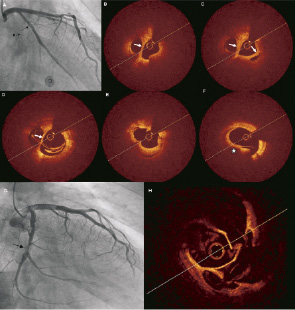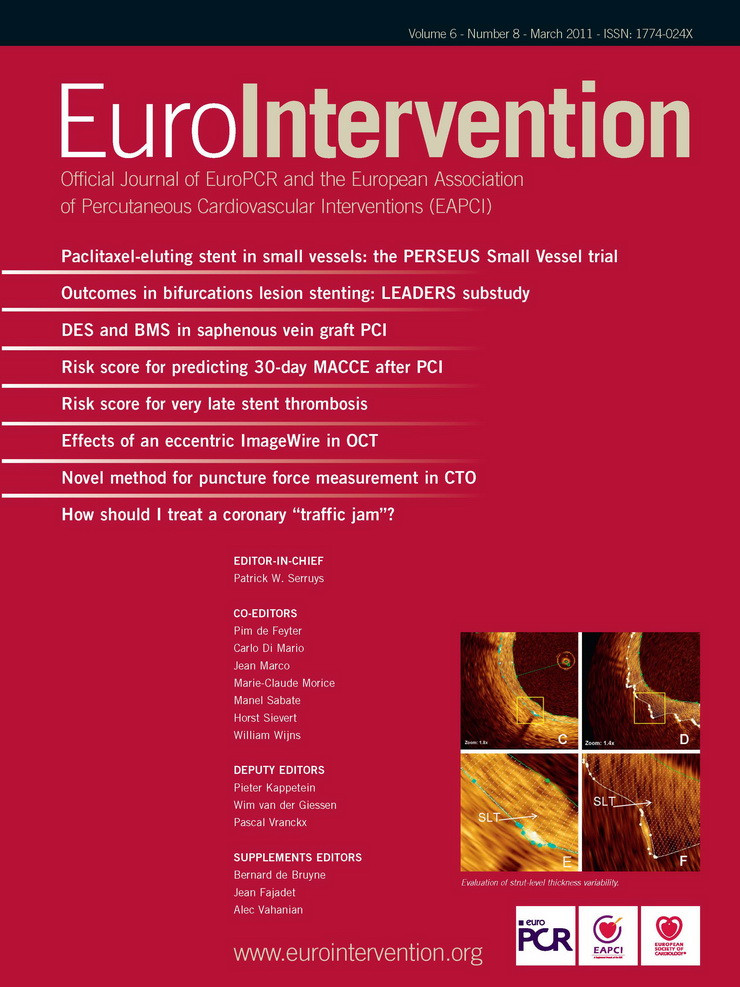Case description
Our figure displays optical coherence tomography (OCT), features of two cases with angiographically suspected recanalised thrombus.1
A 45-year-old smoking and hyperlipidaemic male was admitted to our hospital with an acute anterior myocardial infarction, successfully treated with primary angioplasty of the LAD. However, angiography also demonstrated an irregular intra-luminal contrast defect in the left circumflex (LCx) artery, (Panel A, black arrow). Three days later, OCT (M2 Cardiology Imaging System; LightLab Imaging, Inc., Westford, MA, USA), demonstrated (Panels B-F), signal rich, high-backscattering diaphragm-like protrusions (white arrows), dividing the lumen to small channels. In Panel F, red thrombus is depicted (asterisk).2 The lesion was stented successfully.
A 60-year-old male with a history of an old myocardial infarction was admitted to our hospital for coronary angiography due to stable angina with a positive exercise stress test. Panel G shows an 80% angiographic stenosis of the LCx with a filling defect, and luminal haziness, consistent with the angiographic features of a recanalised thrombus.1 OCT of the LCx (Panel H), shows signal rich, high-backscattering diaphragm-like protrusions, dividing the lumen to multiple small channels communicating with each other. Based on the angiographic appearance, we speculate that these diaphragm-like protrusions represent remnants of a late stage recanalised thrombus. The lesion was re-crossed without difficulty and stented successfully.
Complex angiographic filling defects may represent ruptured atheromatous plaques, coronary artery dissection, emboli, mural calcification, unapposed stent struts, or recanalised thrombus.3 In vivo clarification of the anatomy of such lesions has become possible with OCT.

Figure 1. Angiographic and optical coherence tomography (OCT) findings in two patients (panels A-F, and G-H) with angiographically suspected recanalised thrombus.

